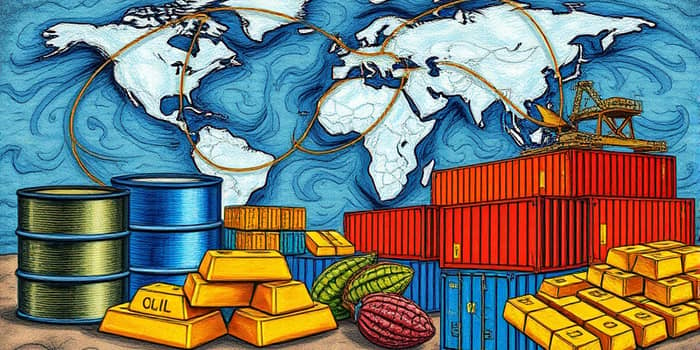
The year 2025 has started with a strong start to the year for commodities, driven by tightening supplies across regions. The Bloomberg Commodity Total Return Index (BCOMTR) has surged 8.3% year-to-date, outpacing last year’s 5.4% gain. Investors and businesses alike are reassessing portfolios and strategies as prices for energy, metals and soft commodities climb amid persistent disruptions and policy shifts.
The uptrend has proven a global broad-based commodity rally across most sectors. Precious metals like gold and silver have drawn renewed attention, while cocoa and other softs have recorded eye-catching gains. Grains remain the lone laggard, reflecting localized harvest challenges and shifting demand patterns. However, the overall picture points to an environment where supply constraints, rather than demand spikes, are the main propellant.
Gold prices are on track toward $3,300 per ounce, while silver may breach $44 per ounce, buoyed by central bank buying and support from Poland, Turkey and India. In contrast, crude oil traded in a $65–$85 range for 2025 is navigating a delicate balance between supply cuts and demand uncertainty. Cocoa’s 100% rally in 2024 underlines how severe weather and logistics bottlenecks can propel markets into uncharted territory.
Geopolitical tensions, from tariffs to regional conflicts, have woven additional strain into already stretched supply chains. The pandemic’s aftershocks—port congestion, equipment shortages and rising freight costs—continue to disrupt flows, prompting companies to absorb higher expenses or face delivery delays. These are symptoms of persistent global supply chain disruptions that show no immediate signs of abating.
Regulatory changes, including tighter environmental rules and cybersecurity requirements, further complicate the commodities landscape. Regions dependent on single-source suppliers remain particularly vulnerable, a reality laid bare by geopolitical instability and trade wars that can halt shipments or impose steep duties overnight.
Energy markets are wrestling with mixed signals. U.S. natural gas benefits from robust domestic demand and growing LNG exports. Yet global oil consumption hinges on economic health in key markets like China and Europe. With OPEC+ maintaining cautious supply cuts, prices have found support, but a resurgence in demand remains uncertain.
Industrial metals face headwinds from China’s economic slowdown and a faltering real estate sector. Nickel and copper, vital for electric vehicles and renewable energy infrastructure, have traded within tight ranges. Longer-term demand drivers remain intact, but short-term volatility underscores the market’s sensitivity to policy announcements and inventory data.
Agricultural commodities are caught between climate-related shocks and improving harvest prospects. Input costs for fertilizers and logistics have soared, adding pressure to producers. Yet easing food inflation and better-than-expected yields have tempered some price spikes. In contrast, soft commodities like cocoa, sugar and coffee have hit new highs under El Niño’s influence and localized crop losses.
Given this backdrop, market participants must adapt to evolving risks. Investors can view commodities as an inflation hedge and portfolio diversifier, while corporate procurement teams should reconsider supplier networks. Digitalization, data analytics and scenario stress tests are critical tools for building resilience and spotting vulnerabilities before they become crises.
By combining these approaches, organizations can manage cost pressures, maintain production continuity and capture opportunities when prices spike. Sharpened risk management not only protects earnings but also positions firms to benefit from market upsides.
Looking forward, the World Bank projects a modest pullback in overall commodity prices in 2025, with energy down 17%, metals slightly lower and agriculture easing 1%. Nevertheless, localized shortages and unexpected shocks—whether from extreme weather, policy shifts or geopolitical flare-ups—could sustain rallies in niche markets.
Ultimately, the 2025 rally underscores the importance of resilience in the face of change. Firms and investors who embrace proactive planning, diversify their exposures and leverage technological solutions will be best equipped to navigate the uncertainty ahead. In a world defined by flux, commodities stand out as an arena where risk and reward intertwine, offering both challenges and chances for those ready to adapt.
References













